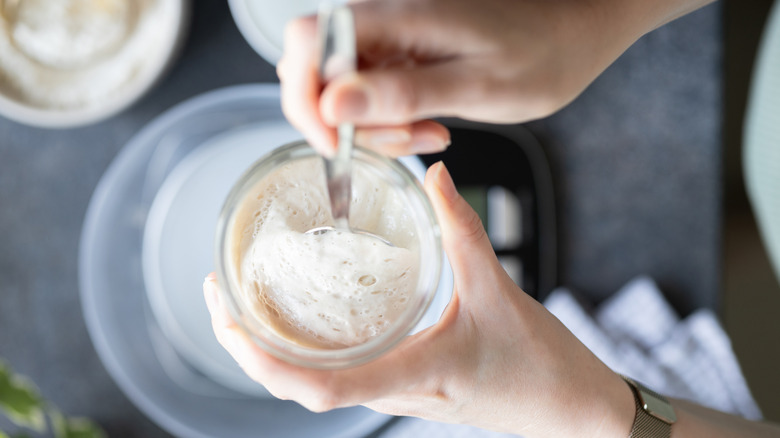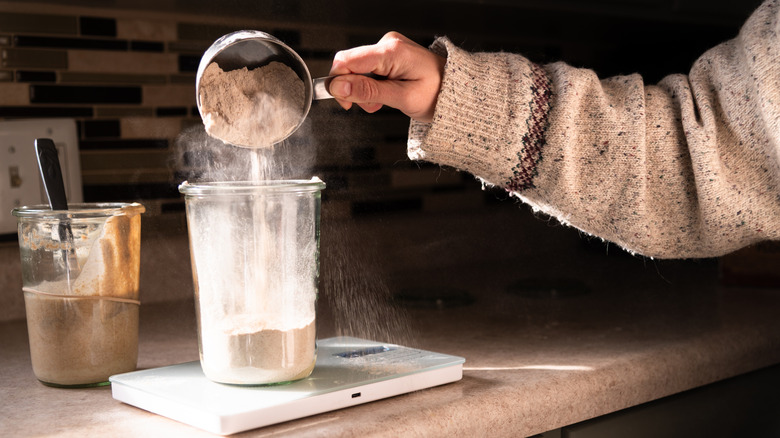How To Bring Dead Sourdough Starter Back To Life
When making sourdough, it's critical to use a sourdough starter, a mixture of flour and water that turns into a live culture over time, giving sourdough its signature flavor, scent, and texture. While it sounds simple enough, it can get a little tricky, especially if you forget to feed it and find yourself with a fridge full of dead starter. To learn how to revive it, Food Republic spoke to Sheena Otto, executive baker at Sheena's Cocina.
While you may see a dead starter and assume you need to toss it, Otto noted that she has successfully revived starters that sat dormant for as long as six months. "With close monitoring and extra feedings, they bounced back and were as good as new!" Otto said.
If you notice a gray color on the top layer of the starter, she said it means that the mixture is starting to oxidize — a common sign that it needs to be fed. "Another sign is a pool of dark gray liquid sitting on top of the starter, which is a byproduct of fermentation and a sign that the starter is exhausting or has exhausted its food supply," Otto said. While she explained that these aren't technically signs that your starter is dead, they are signs that it may need some help. "You can pour off the liquid and scrape the discolored portion away from the starter, and refresh the starter as you normally would."
Tips for feeding a sourdough starter
While feeding a sourdough starter may feel intimidating, it's easy enough to get going. For the best outcome, you'll want to start with a flour that suits the sourdough you're trying to make — use AP flour for a tighter crumb, and bread flour for a larger crumb. Additionally, Sheena Otto said that it's best to find a feeding schedule that fits into your lifestyle. Doing so will help keep the experience positive rather than making sourdough baking feel like a burden. "If you're only going to bake once a week, you don't need to feed it daily; you can feed it two days before baking to wake it up, and then the next day (or whenever it's ready), so that it's ready to mix into your dough," Otto recommended.
If you don't want to go through the hassle of dealing with a starter, there are ways to get a similar result. "You can mimic the flavor of a sourdough bread by adding other ingredients to the dough, like vinegar, but the texture and flavor will be slightly different than a true sourdough," Otto said.
With all of her experience, she learned that it's actually pretty hard to kill a starter. "The exception is if you notice any kind of mold beginning to form on the starter, or in the container holding the starter." In such cases, ditch the whole thing and start over — there's no coming back.


